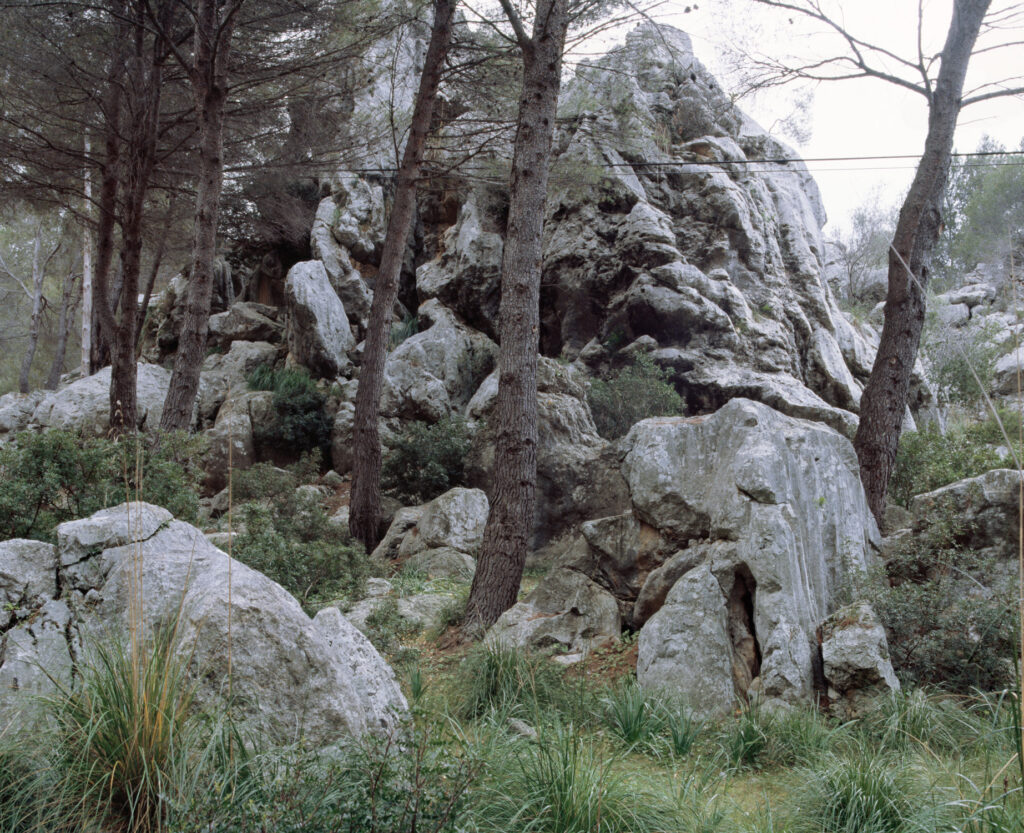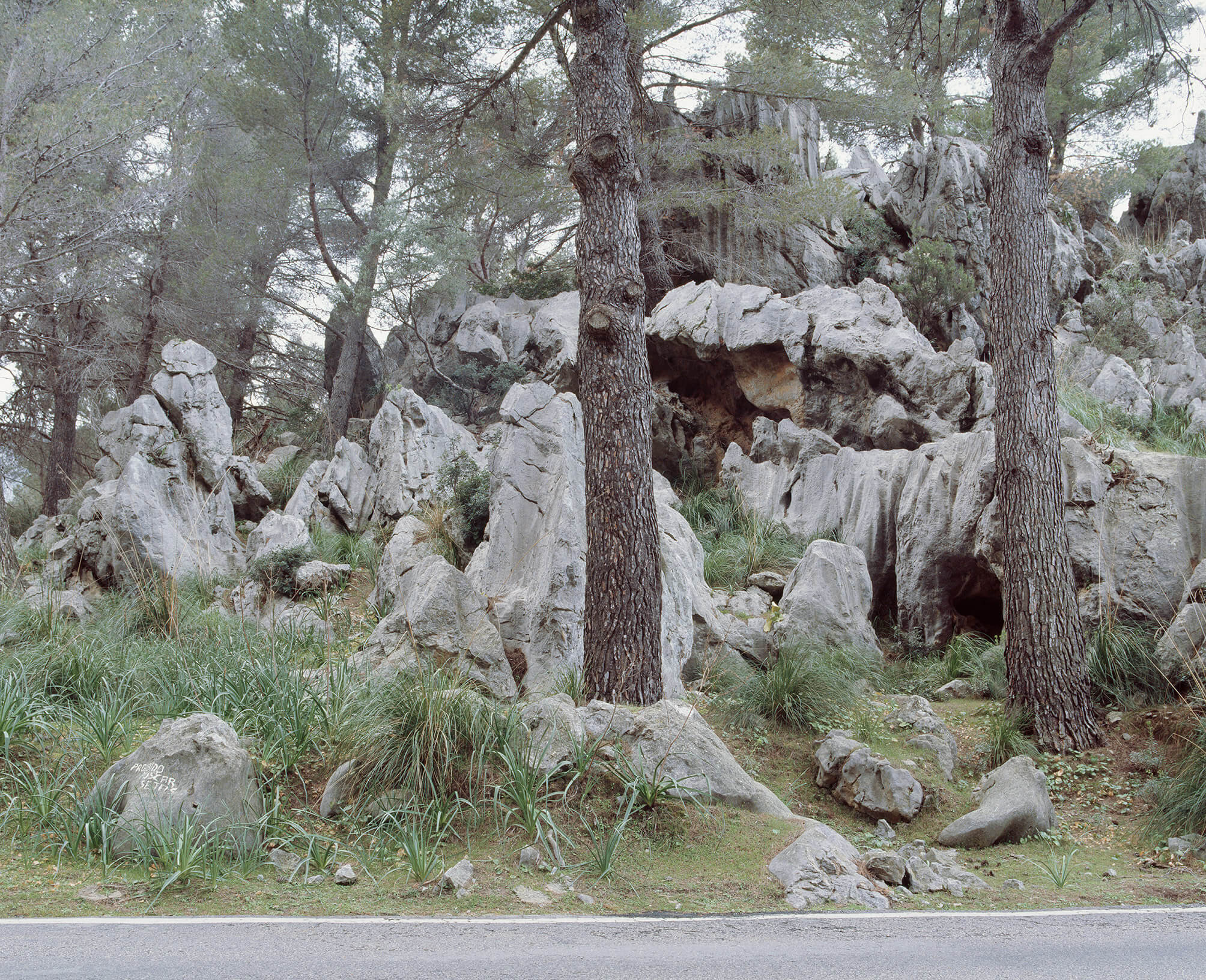What constitutes a ‘document’ and how does it function?
According to the Oxford English Dictionary, the etymological origin is the Latin ‘documentum’, meaning ‘lesson, proof, instance, specimen’. As a verb, it is ‘to prove or support (something) by documentary evidence’, and ‘to provide with documents’. The online version of the OED includes a draft addition, whereby a document (as a noun) is ‘a collection of data in digital form that is considered a single item and typically has a unique filename by which it can be stored, retrieved, or transmitted (as a file, a spreadsheet, or a graphic)’. The current use of the noun ‘document’ is defined as ‘something written, inscribed, etc., which furnishes evidence or information upon any subject, as a manuscript, title-deed, tomb-stone, coin, picture, etc.’ (emphasis added).
Both ‘something’ and that first ‘etc.’ leave ample room for discussion. A document doubts whether it functions as something unique, or as something reproducible. A passport is a document, but a flyer equally so. Moreover, there is a circular reasoning: to document is ‘to provide with documents’. Defining (the functioning of) a document most likely involves ideas of communication, information, evidence, inscriptions, and implies notions of objectivity and neutrality – but the document is neither reducible to one of them, nor is it equal to their sum. It is hard to pinpoint it, as it disperses into and is affected by other fields: it is intrinsically tied to the history of media and to important currents in literature, photography and art; it is linked to epistemic and power structures. However ubiquitous it is, as an often tangible thing in our environment, and as a concept, a document deranges.
the-documents.org continuously gathers documents and provides them with a short textual description, explanation,
or digression, written by multiple authors. In Paper Knowledge, Lisa Gitelman paraphrases ‘documentalist’ Suzanne Briet, stating that ‘an antelope running wild would not be a document, but an antelope taken into a zoo would be one, presumably because it would then be framed – or reframed – as an example, specimen, or instance’. The gathered files are all documents – if they weren’t before publication, they now are. That is what the-documents.org, irreversibly, does. It is a zoo turning an antelope into an ‘antelope’.
As you made your way through the collection,
the-documents.org tracked the entries you viewed.
It documented your path through the website.
As such, the time spent on the-documents.org turned
into this – a new document.
This document was compiled by ____ on 20.07.2022 06:34, printed on ____ and contains 23 documents on _ pages.
(https://the-documents.org/log/19-07-2022-4126/)
the-documents.org is a project created and edited by De Cleene De Cleene; design & development by atelier Haegeman Temmerman.
the-documents.org has been online since 23.05.2021.
- De Cleene De Cleene is Michiel De Cleene and Arnout De Cleene. Together they form a research group that focusses on novel ways of approaching the everyday, by artistic means and from a cultural and critical perspective.
www.decleenedecleene.be / info@decleenedecleene.be - This project was made possible with the support of the Flemish Government and KASK & Conservatorium, the school of arts of HOGENT and Howest. It is part of the research project Documenting Objects, financed by the HOGENT Arts Research Fund.
- Briet, S. Qu’est-ce que la documentation? Paris: Edit, 1951.
- Gitelman, L. Paper Knowledge. Toward a Media History of Documents.
Durham/ London: Duke University Press, 2014. - Oxford English Dictionary Online. Accessed on 13.05.2021.

At the end of the day, riding home after work, I find a text on my hand:
C
D[…]ers
Desk
K
Communication book
‘Diapers’, I recall, and stop at the shop to buy them. Sweat, dust, and manic hand rubbing have rendered parts of the writing illegible. ‘C’ is for Carl, whose newborn I need to visit as soon as possible. Sometimes, I can’t remember what the initial stands for. I don’t have any friends with names beginning with a K (who have newborns I need to visit).
The right hand writes, the left hand serves as the canvas. The back of the right hand, folded around the pen, is blank and tells the always already written on back of the left hand, whose palm never holds a pen, what to register. Right: an author. Left: a poem, sunken into the pores.
Back home, I trace ‘Desk’ again, as not to forget to clean it tomorrow.
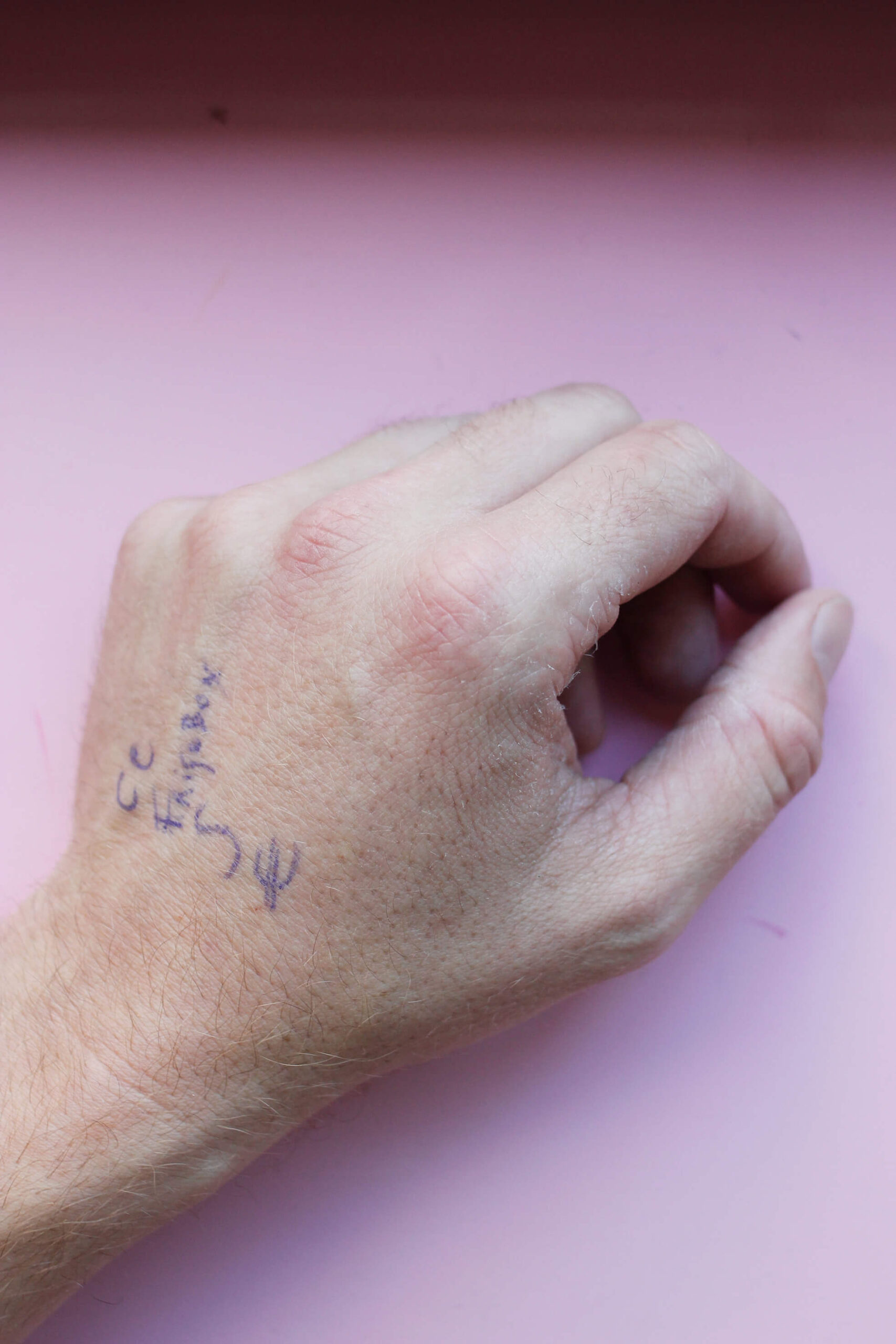

‘Submission for an art project named the-documents.org’ is a collection of 9 images1 generated by DALL·E mini2, an open-source AI model, on the basis of the prompt ‘Submission for an art project named the-documents.org’.
DALL·E mini is a freely available AI tool that generates images based on a description of the desired image (a prompt) provided by a user.
Though DALL·E mini seems to be primarily used as a source of humour within the online community – being able to create a set of images from any specific or abstract prompt – it also gives rise to more serious questions on AI ethics and copyright. As the model is trained with unfiltered data from the internet, it may reinforce societal biases, generating images that contain stereotypes against minority groups. DALL·E mini and similar, more advanced tools, are also capable of creating art ‘in the style of’ when they have sufficient data to source from (e.g. using a prompt as “Van Gogh painting the Eiffel Tower”). This leads to the legal and ethical question whether an artist should have a say in the use of his/her artwork as AI input data, and whether the artist should be able to claim rights for AI generated images based on this data.

DALL·E mini was created by Boris Dayma et al. 2021-2022, https://huggingface.co/spaces/dalle-mini/dalle-mini, to be migrated to www.craiyon.com
Ward Verwaeren is a legal counsel in the tech industry, and former IP lawyer. He tries to know more about art than the average lawyer, and more about law than the average artist.

On Mondays, before noon, I go to the supermarket with my two-year-old son. After passing the lasagnes, the loaves of bread and the fruit and vegetables, we make a short stop at the aquarium with the lobsters. Around New Year, there are two of them.
After we’ve paid for the groceries and have put them in the car, we walk into the pet shop. We look at the parrots (Jacques, Louis and Marie-José), the rabbits, the guinea pigs, the assorted caged birds and the fish and turtles. He’s very fond of the Cyphotilapia Frontosa Burundi. He calls them zebras. They hail from Lake Tanganyika, the label says. It’s the second-oldest freshwater lake, the second-largest by volume and the second-deepest. The pet shop has adorned their aquarium with a scene of ocean waste.
In an effort to avert guilt, I look for something cheap and more or less useful to buy: birdseed, a snack for the neighbour’s cat, a comb for his grandparent’s Labrador, etc.
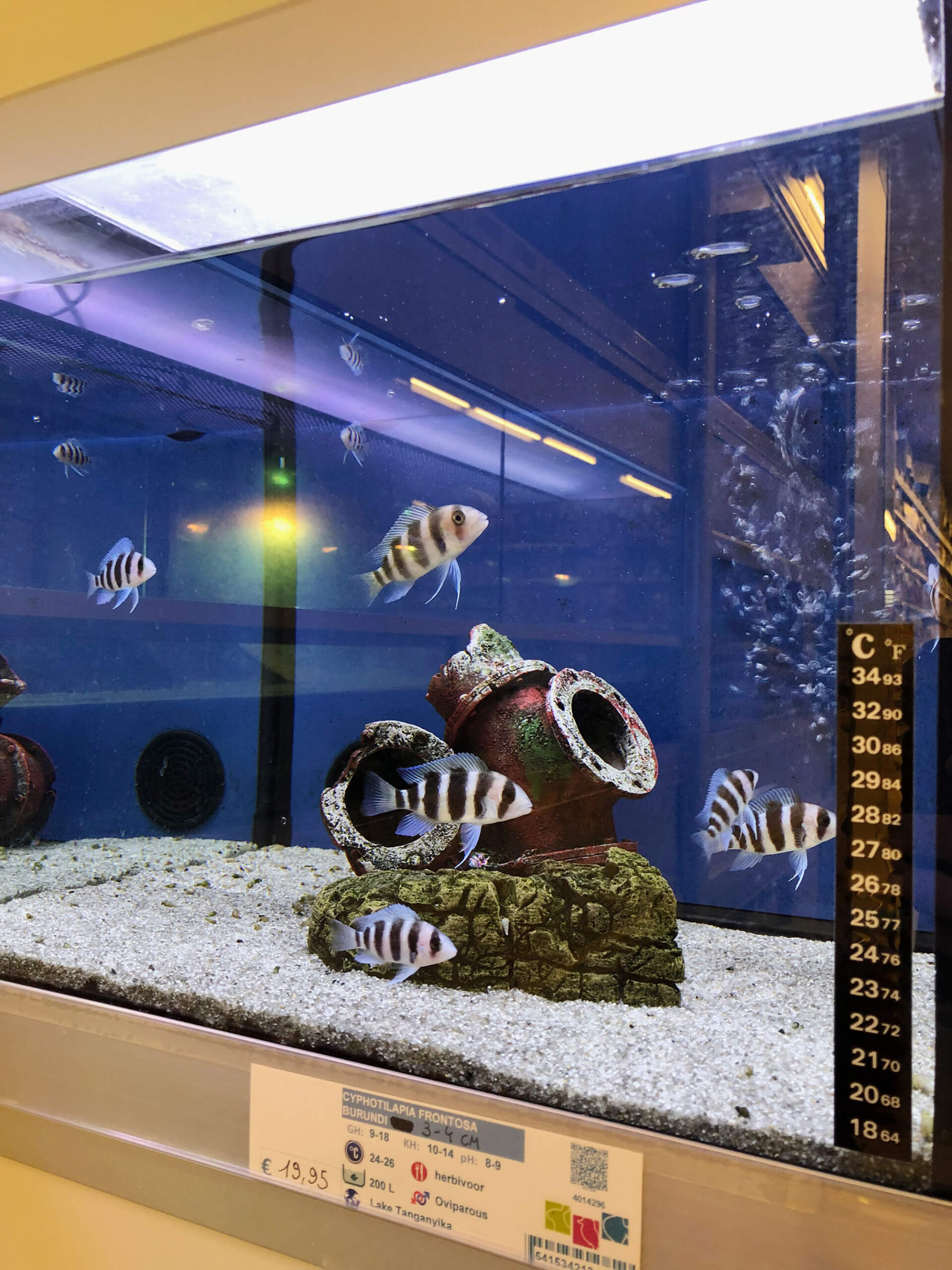
The GPS-plotter displays the ship near Keyhaven Lake, indefinitely. The sea appears calm, the horizon is level from one perspective.
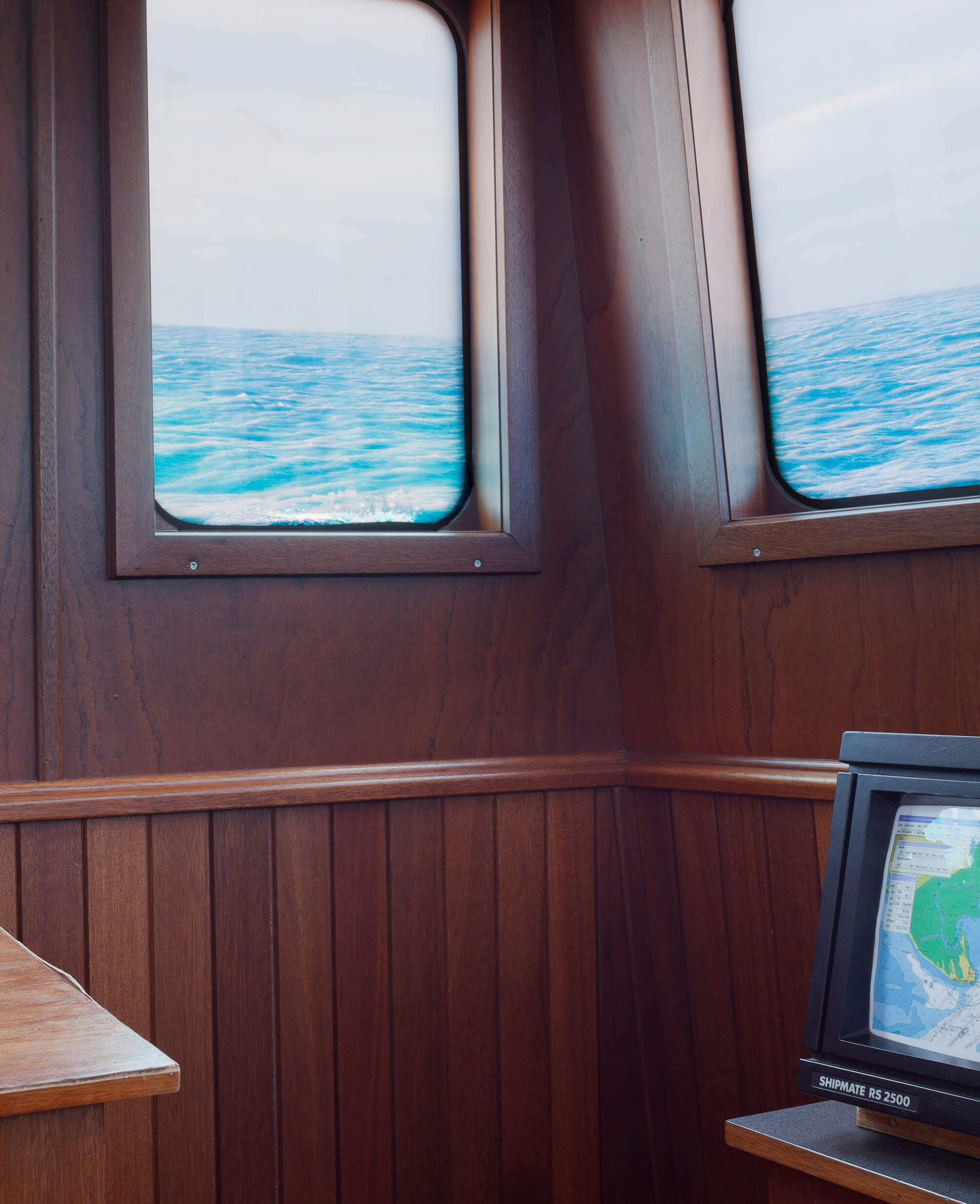
_44A6588.dng
At 13:26:43 I took a photograph of a concrete building without windows in an industrial zone just south of Brussels.
_44A6590.dng
At 16:46:15 I photographed a succession of office buildings in the same industrial zone.
_44A6589.dng
I must have walked about 1 kilometer between the concrete building without windows and the section of the industrial zone with the offices. At 13:43:49, the camera, safely stored in my backpack, recorded 0.4 seconds of the 20 minutes it took me to get there.
In The Snows of Venice, Alexander Kluge wonders whether he can take the liberty to conjure up what the sky looked like on 31 December 1799, as Schiller made his way to Goethe’s house. He goes on by saying that, historically, there’s a ‘LACK OF SENSORY ATTENTION AT CRUCIAL MOMENTS’.1 There are exceptions, though, like the cameraman that was sent out to document the fireworks on New Year’s Day 2000. The camera was turned on prematurely. The batteries were used up by midnight, but ‘certain gray tones, however, filtered through the cracks of its protective case, conveyed the motion of the walking cameraman, the transportation. The incompletely shut, low-information container was documented exactly […] To this day it provides inexact testimony as to the qualities of the leather of a twenty-first century carrying case and the precise sensitivity to light and dark demonstrated by a twenty-first century recording medium.’2
Lerner, B., Kluge, A. The Snows of Venice. Leipzig: Spector Books, 2018, p. 53
Ibid.

Because an acquaintance of the family was a missionary, the postage stamp collection had a large quantity of stamps from the Philippines. You had to boil water, hold the empty envelope above it, wait until the glue and the missionary’s saliva loosened and evaporated, and then gently peel off the stamp. Then, it was put on a piece of pink blotting paper. Once dry, the stamp was slid into a tailor-made booklet.
Between a Horta building’s facade and King Baudouin’s portrait, there are exotic fish, religious scenes, butterflies, and advertisements for NGOs.
Mango is the Philippines’ national fruit. Pope John Paul II visited it in 1995. There was a guerrilla unit in Northwest Pampanga during WWII.
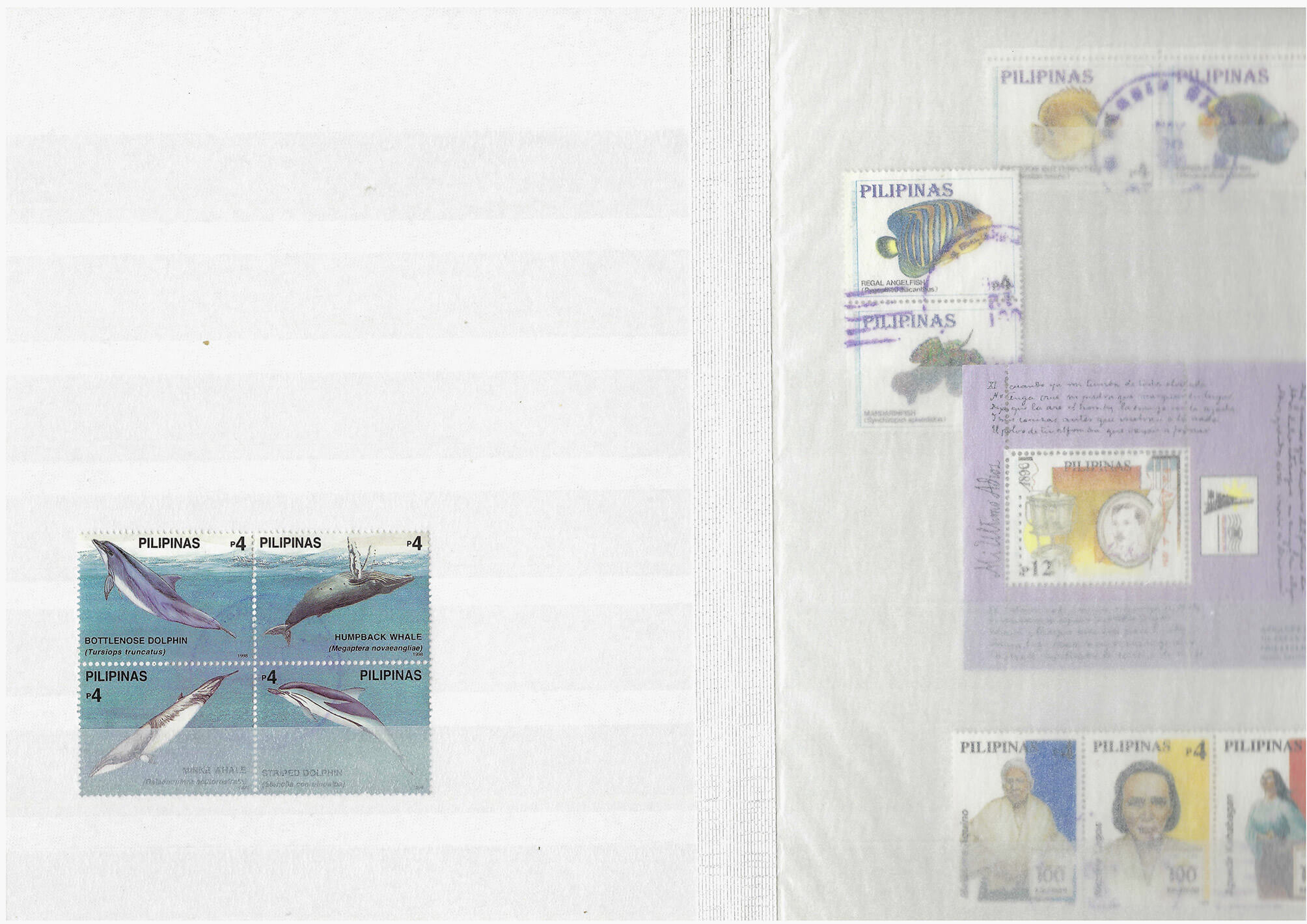
On a pile of fresh hospital sheets, near the radiator, the tangerine curtains and the black marble window sill (the window looks out over the parking lot), underneath the two-day-old bouquet of flowers and next to a pile of magazines with a handwritten note on top (about a syrup that relieves slime and tastes like oranges), lie two sheets of paper.
Earlier that day the physiotherapist had come by. Twice. Once in the morning and once in the afternoon. He had each time drawn the first line, as an example. A straight line in the morning, a curvy line in the afternoon.
With a ballpoint pen my grandfather, who is recovering from an accident, diligently copied the examples (31 in the morning, 5 in the afternoon).
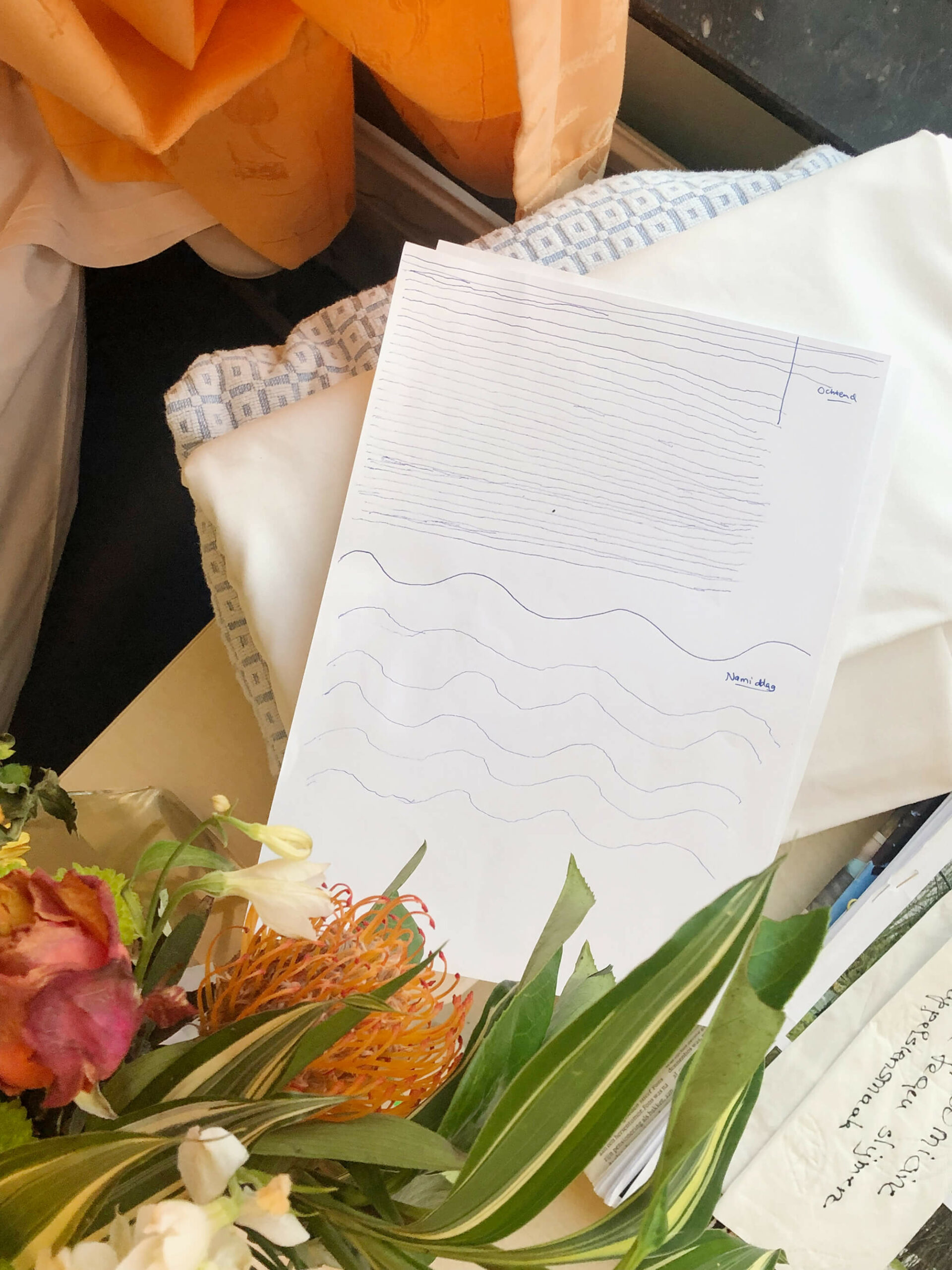
K. says that the stall where he usually buys fruit has already been packed up. But he is not worried about the quality of the fruit the other vendor sells. He gestures encouragingly.
Five signs of type-1, eleven of type-2 and two of type-3 are visible. Four of type-2 (two visible, two deduced) and two of type-3 retain two vehicles.



Márk Redele pursues projects that fundamentally relate to architecture and its practice but rarely look like architecture. www.markredele.com

Where once there was twelve million cubic metres of water, excavators and trucks are moving dirt and rocks that have been hidden from sight for 56 years; piling them up into a temporary dam: a batardeau.

On January 23, 2020 a young couple walks around the drained reservoir of Kruth-Wildenstein.
It’s freezing. They’re expecting their first child within a month.
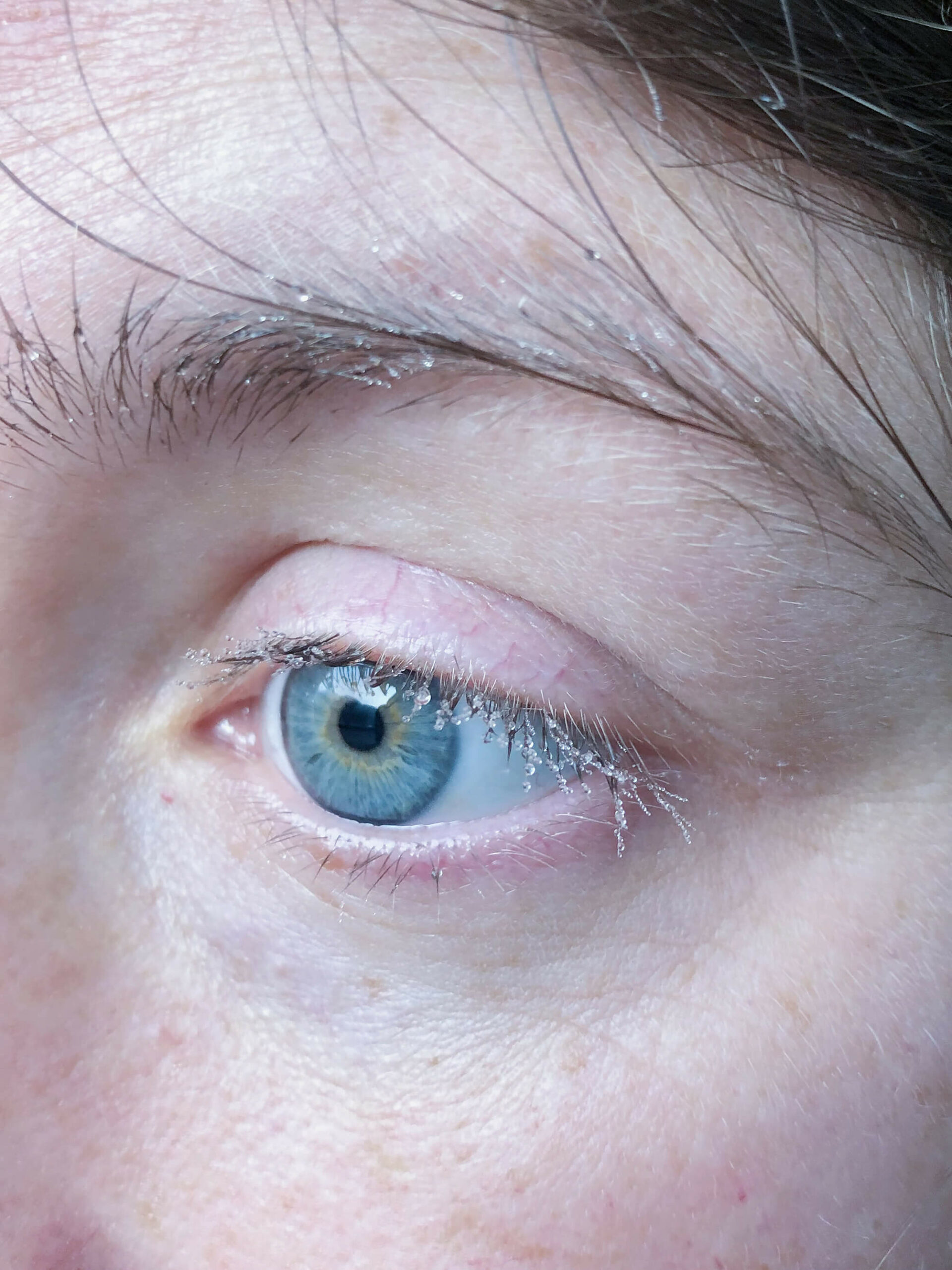
The river swells and eventually overflows, causing the death of six people and extensive damage: washed away bridges, damaged homes, submerged factories, destroyed food stocks, heavily eroded roads and paths.
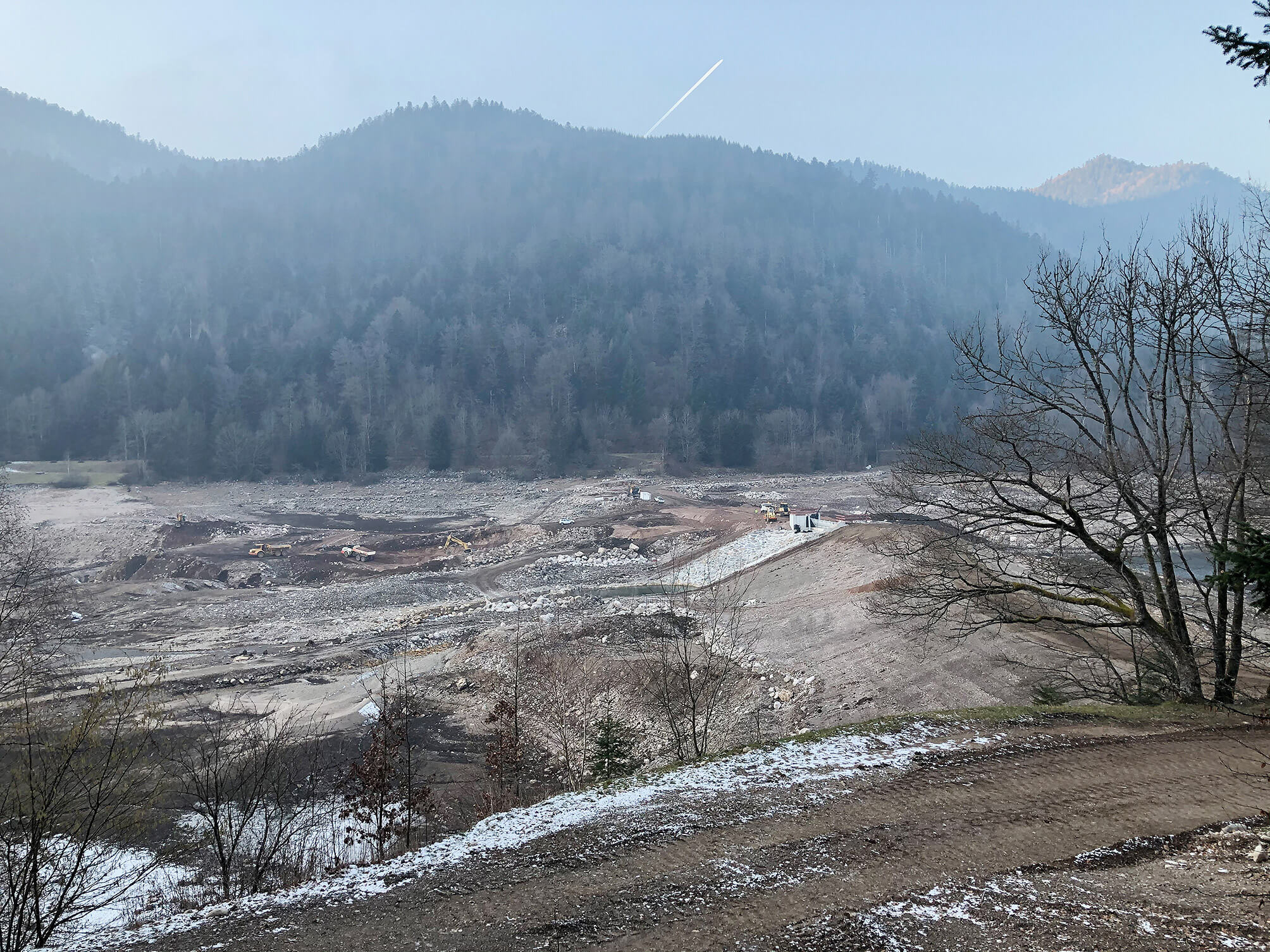
Fairly detailed map of the two major marble quarries on the island of Tinos, Greece. The spontaneous route-advice was prepared by a local marble worker, P.D., in the Karia region of the island on a locally extracted, green marble slab. The waved lines represent roads traversing uphill, while the straight lines represent roads following a contour line of the topography.
‘Tell your friend that the wine is for girls; it’s very sweet,’ the marble worker alerted my travel companion K.S. after offering us local sweet wine. The workshop smelled like boiled meat and bones.
Notes on map from left to right, top to bottom:
- Towards Vathi
- Quarry
- incomprehensible
- Towards Vathi Bleu
- Isternia
- Pirgos
Márk Redele pursues projects that fundamentally relate to architecture and its practice but rarely look like architecture. www.markredele.com

Cathedral glass, or Flemish glass, lets light through, but distorts visibility. It can show something or someone is present behind it, but not in detail. Often used in front doors, it marks the opaque edge between the private and the public sphere, laying bare their presence, without disclosing their contents.
A blue hand, or a spider (Cyriopagopus lividus), traces the cracks that testify to the fact that the jammed door had to be closed with force. The hinges need oiling. Cobalt blue tarantulas are said to be extremely defensive.


A cigar box, standing at the back of a shelf next to the heating installation, with in it silex-like stones with what seem to be traces of prehistoric usage.
In the garage, there were papers (the archive of O. Clemminck) and objects (stones, tiles) left to us by a man who had worked at the city archive. He was an acclaimed expert on our village’s history.1
A recent study by professor Philippe Crombé at Ghent University states that during the last Ice Age, in the region where I grew up, there was once a great lake, with, at the shores, proven presence of prehistoric man. As a kid, we dug up shells with a toothbrush, and set a perimeter with plastic tape. The former presence of a tavern where my parents now live, and the restaurant which still serves seafood at the other side of the road, prevented accurate dating.
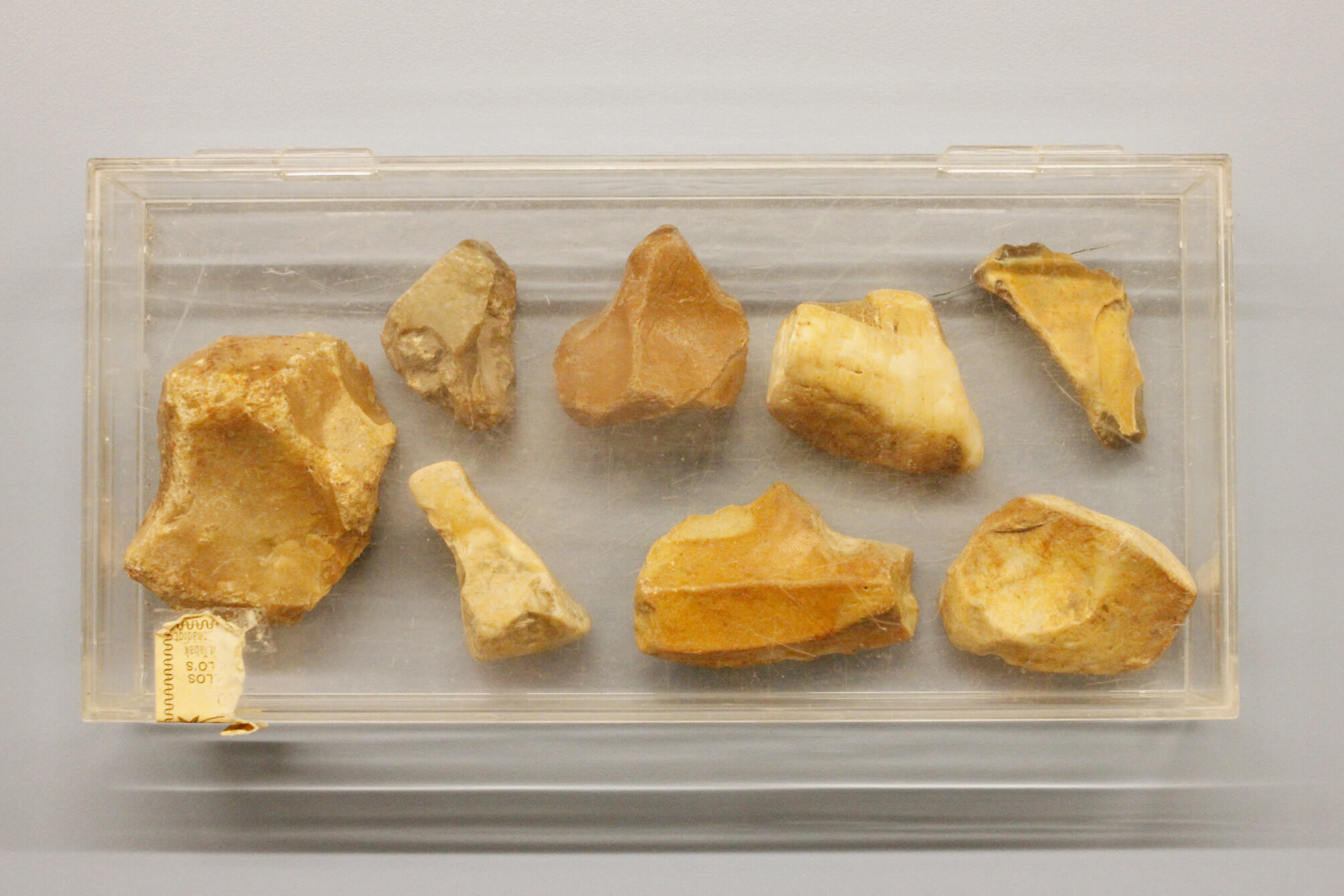
At the copyshop, on a shelf above photocopier 8, the lid of a box of paper serves as the container for ‘forgotten originals’.1
The book being copied: Didi-Huberman, G. La ressemblance par contact. Archéologie, anachronisme et modernité de l’empreinte. Paris: Les Editions de Minuit, 2008.
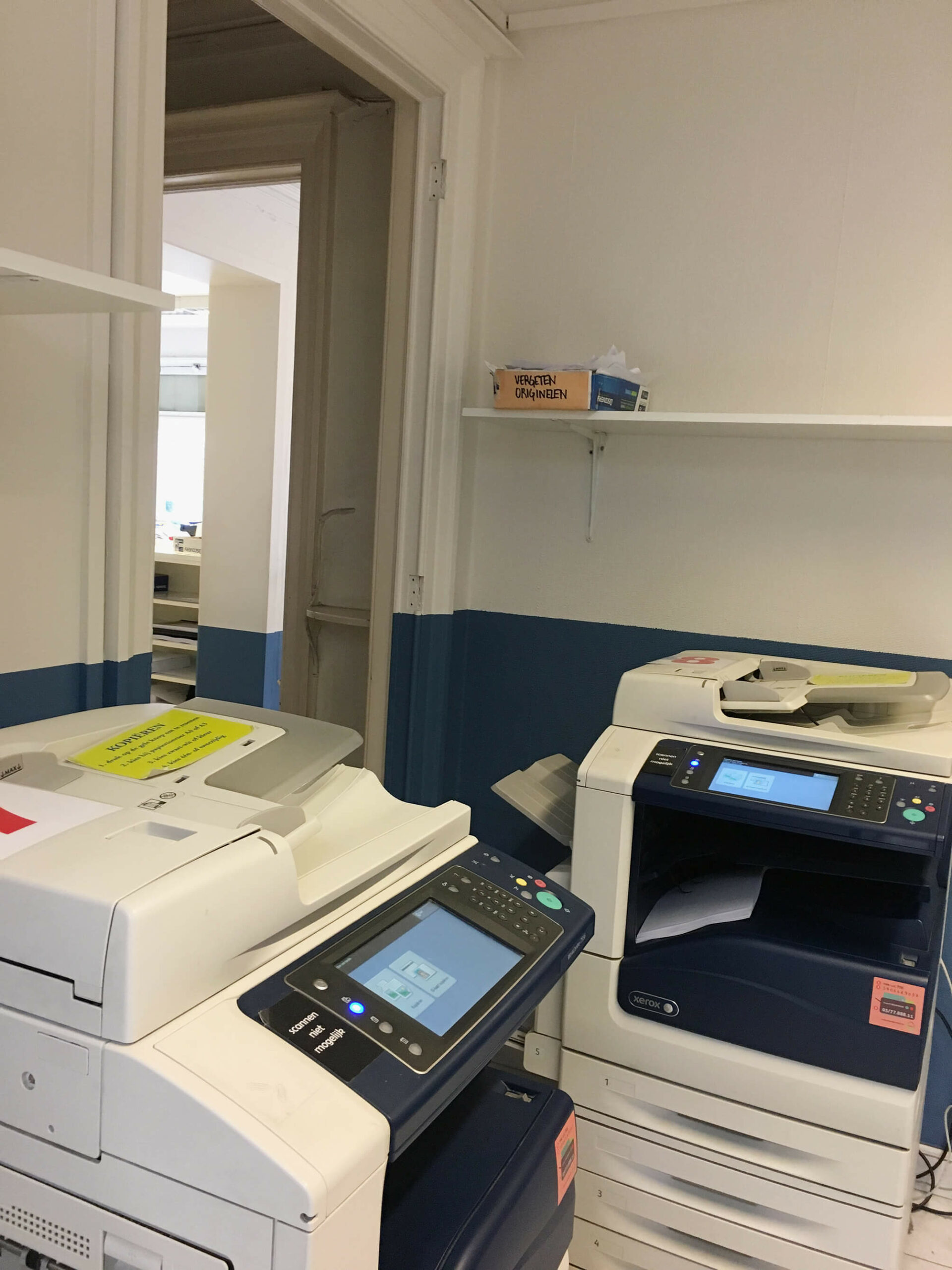
Conducting research into the effects on energy consumption of blockchain-based applications such as bitcoin, I was triggered by the fact that many of the facilities making blockchain-mining1 possible are located in Georgia. Low energy prices and a relaxed taxation policy are said to be among the reasons why companies such as Bitfury locate their plants there.
After a three-day hike in the Caucasus Mountains, on the Georgian side of the border with Chechnya, we are invited to pitch our tent in the garden of Murati, a local farmer in a small mountain village. We are overwhelmed by the scenery and Murati’s hospitality. Many of the villages, thrown on the mountain flanks, have tower-like structures of some twenty meters high, making them all look fortified. They have no windows or doors on the ground floor.2
Murati invites us into his house to drink warm milk with his family and brings us cheese-filled bread. One of us speaks Russian. He inspects our backpacks, headlights and drinking bags. He tells us a 500 kilogram pig of his did not return to the house that night. The family is saddened.
In the evening, we see him taking his granddaughter by the hand. They walk to the highest point of the gravel road in front of his house and together watch the last light of the day fall on the snow-covered triangular peak of one of the Caucasus’ highest mountains.
I’m mistrusting my memory and look the passage up in the journal we kept. The village is called Zagar. The mountain is Mount Tetnuldi. The granddaughter’s name is Anna.
When I click through to one of the websites promising information on Georgia’s blockchain economy, I happen to stumble on a dark web-related website and access is denied.3
‘Mining’ is what is being done when data – a transaction – has to be added to the blockchain (which, in itself, is the sum of all previous transactions, added to each other as data). To do this, computers have to solve a complex mathematical puzzle, which is crucial for the trustworthiness of the system, but for which loads of energy is needed. Criticism on the effects of blockchain-mining is growing, as it has a gruesome effect on resources. In 2018, Andrew North writes, Bitfury used 28 million kilowatt-hours of electricity per month, equalling the consumption of 120,000 Georgian households.
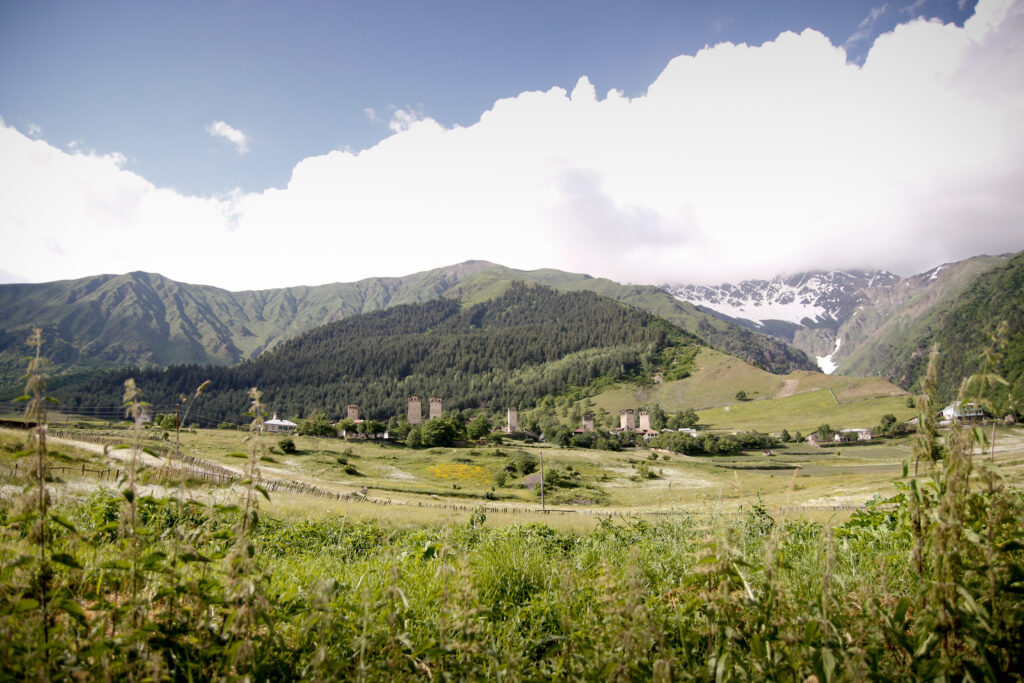
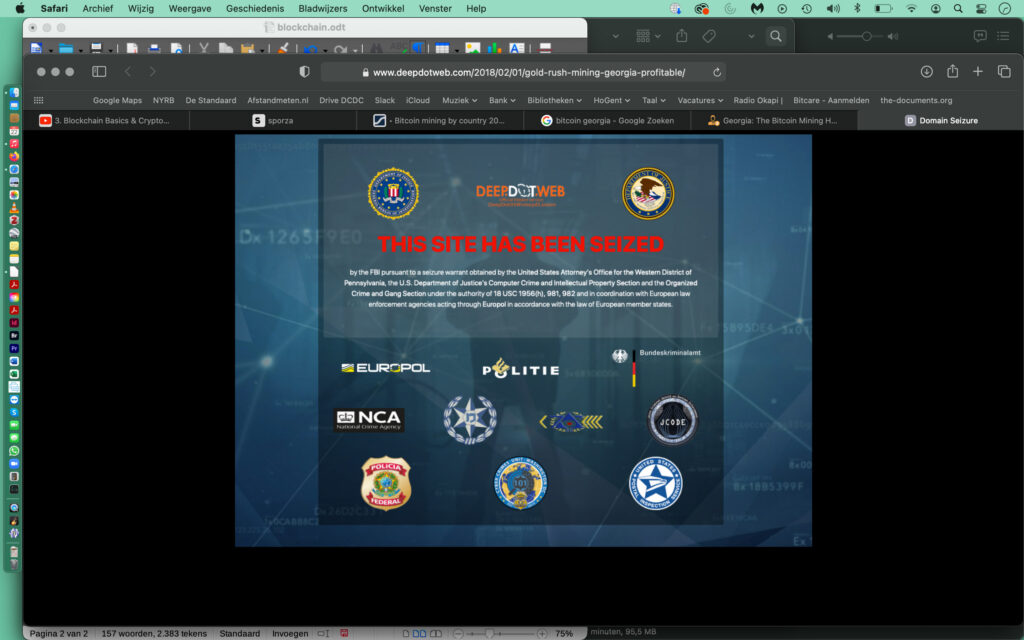

Article 75 of the Royal Decree containing general regulations for road traffic and the use of public roads, published in Het Belgisch Staatsblad on 9 December 1975, lists the rules for longitudinal markings indicating the edge of the roadway.
According to 75.1, there are two types of markings that indicate the actual edge of the roadway: a white, continuous stripe and a yellow interrupted line. The former is mainly used to make the edge of the roadway more visible; the latter indicates that parking along it is prohibited.
In 75.2, the decree focuses on markings that indicate the imaginary edge of the roadway. Only a broad, white, continuous stripe is permitted for this purpose. The part of the public road on the other side of this line is reserved for standing still and parking, except on motorways and expressways.
https://wegcode.be/wetteksten/secties/kb/wegcode/262-art75

It’s early spring. The pool is covered with a sheet of plastic. The deciduous trees are just leafing out. A tree stump serves as a placeholder for the diving board’s foot – it was customary to take it indoors for winter – and keeps people from kicking its threaded rods sticking up from the silex tiles that line the pool.
The upper right corner of the plastic frame is missing. It’s probably where the insect – now dead, dry and yellowish – got in. The frame was left behind in the laundry room overlooking the garden, the pool and the pool house. At the time it hadn’t been used for quite a while. Half empty, the water green.
In summer, when the wind dropped, horse-flies came. You could shake them off temporarily by swimming a few meters underwater.

On the second to last day of a research visit at CERN, there was some spare time in the schedule. I took a long walk towards building 282 in search of some excavation samples: cylindrical pieces of rock that were preserved when the tunnel was dug, glued to a block of wood and frequently exhibited in museums over the last three decades as material evidence of the earthwork and as a witness to the depth. The route led me along the back of building 363 where the wind caused young trees – now gone – to scuff the facade over time.
First published in: De Cleene, M. Reference Guide. Amsterdam: Roma Publications, 2019, as W.569.EXC CERN, Towards Building 282, in search of excavation samples
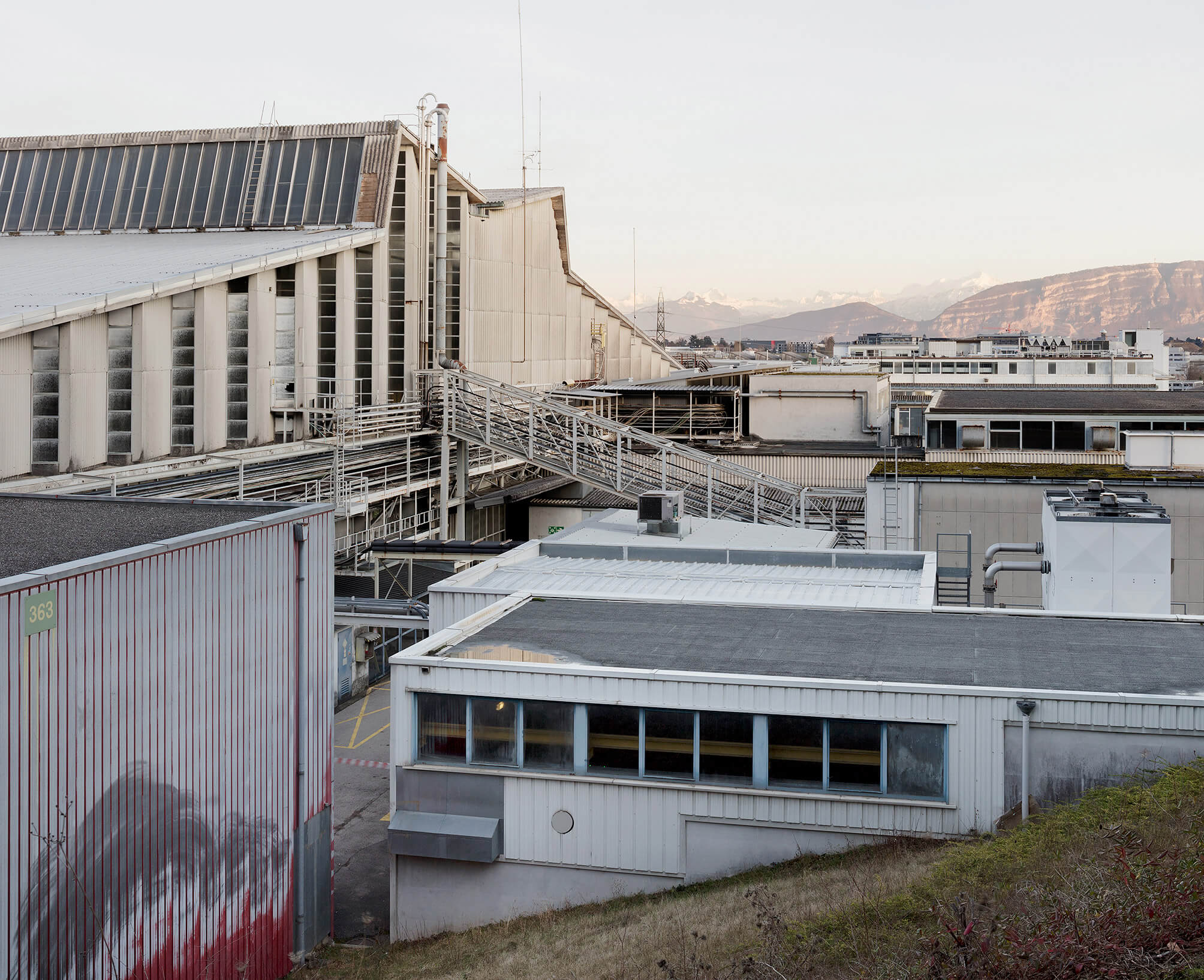
I’m taking a scan of a family photo album given to me after my grandmother passed away, wanting to write something about the marvelous portraits inside. The genealogy is only partly clear to me: I recognize my dad as a kid, my uncle, my grandmother, her brother in the laboratory he (said he) ran. He smelled of cigars and severe perfume. The older photographs present people I don’t know, but must be my ancestors. My grandmother told me stories1 that, historically, reach further back than the figures I recognize in the photographs. There are no names and no dates in the album. The first two pictures seem to be the oldest ones.2 I retract them from the album pockets in which they were slid to check if something is written on the backside. When I take the album away from the scanner’s glass plate, particles of leather, gold varnish and sturdy cardboard come loose. I place a sheet of paper on the glass plate and press ‘scan’ again.
Once she (my grandmother) went home from school, sick, with her bicycle. She studied to become a nurse. The school was in Brussels, about 60 kilometers from her native village M. The milkman’s van tipping over in front of my grandmother’s parental house. A milk covered street. My great-grandfather, physician and mayor at M. Something happened during the Second World War having to do with telephones or radios when she was still a kid.
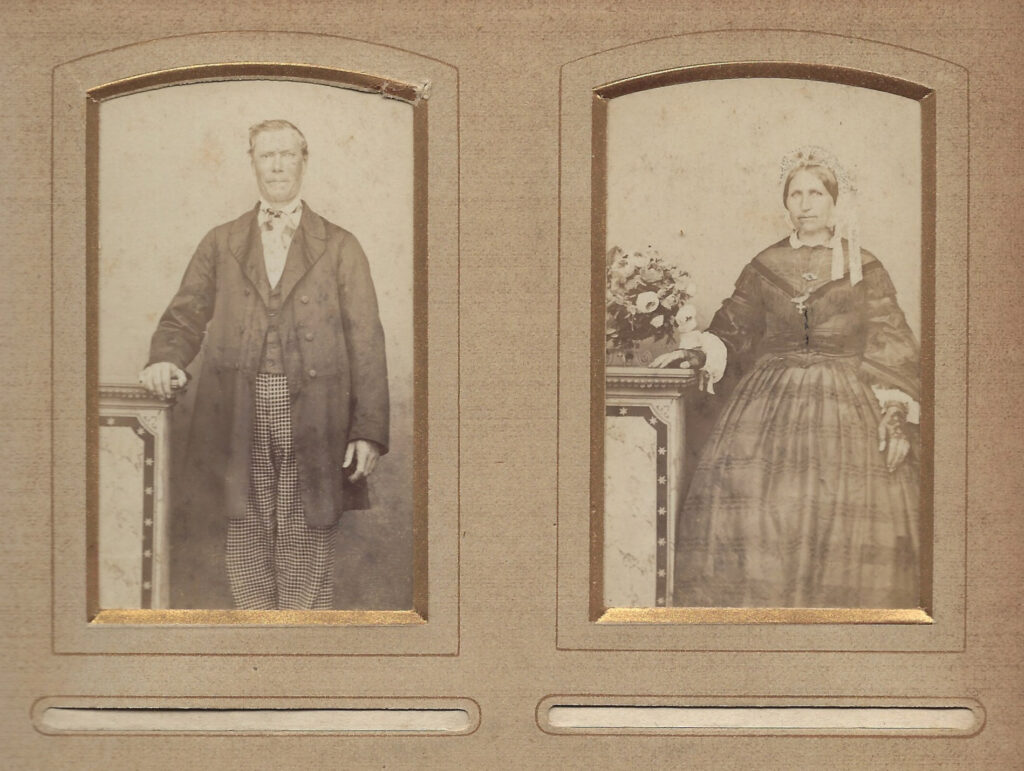
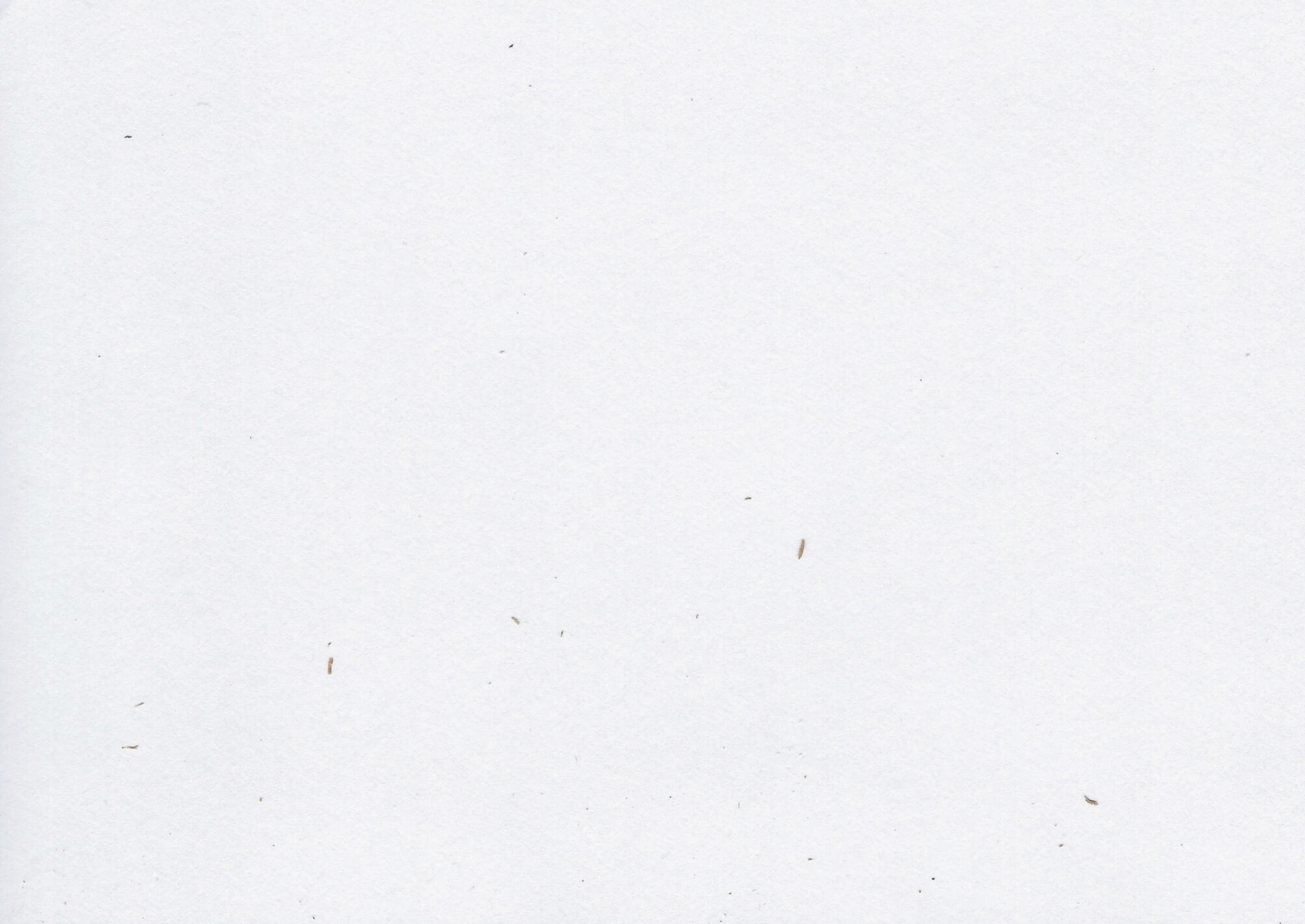
In his debut novel ‘De Metsiers’ Hugo Claus employs a multiple narrative perspective. In the copy I picked up in a thrift store, there’s a bookmarker between pages 44 and 45 where the perspective shifts from Ana to Jim Braddok. It’s pouring. The pink piece of paper lists 9 sessions at a driving school. There’s a total of 20 hours, taught alternately by Johan and Guy.
In 2000, 2006 and 2017 the twenty-sixth of December was a Tuesday. (Earlier years are improbable, since the Euro was not introduced yet.)
Claus, H. De Metsiers. Amsterdam: Uitgeverij De Bezige Bij, 1978.
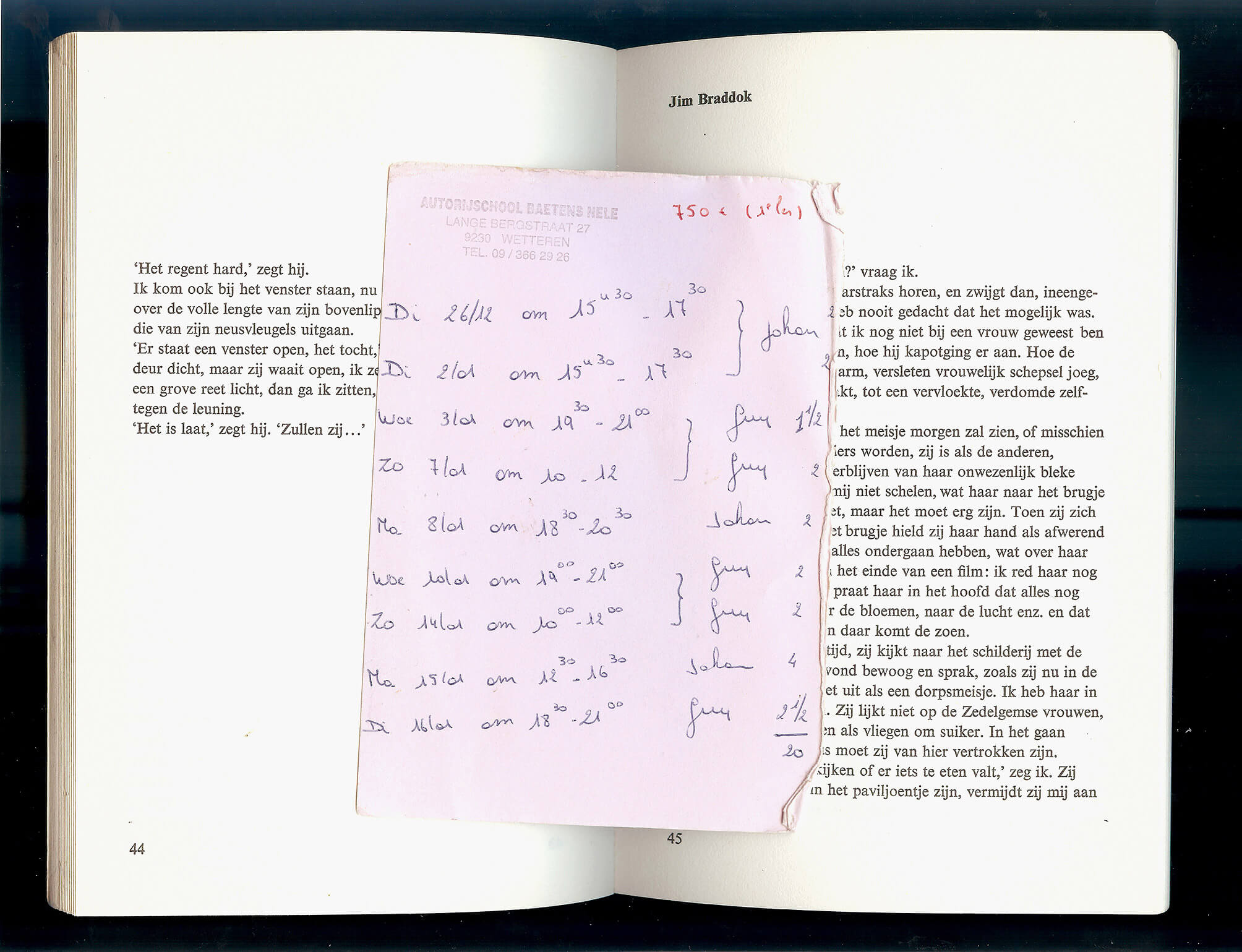
As the hours passed, and while clouds continuously kept us from seeing stars and planets, we started to photograph the set-up used to launch this website. To highlight the umbrella that protected the gear from the unpredictable bursts of rain, we used a flashlight: during the thirty second long exposure, it was lit for two seconds. This proved to be enough to give the whole the feel of an untampered, realistic view. Meanwhile, the website was in all likelihood streaming a grey haze, as the telescope was pointed to the fleeting clouds and gradually spinning along with the earth’s movement to keep track of the same invisible celestial bodies. As we returned to the base, planet Jupiter had become visible to the naked eye.
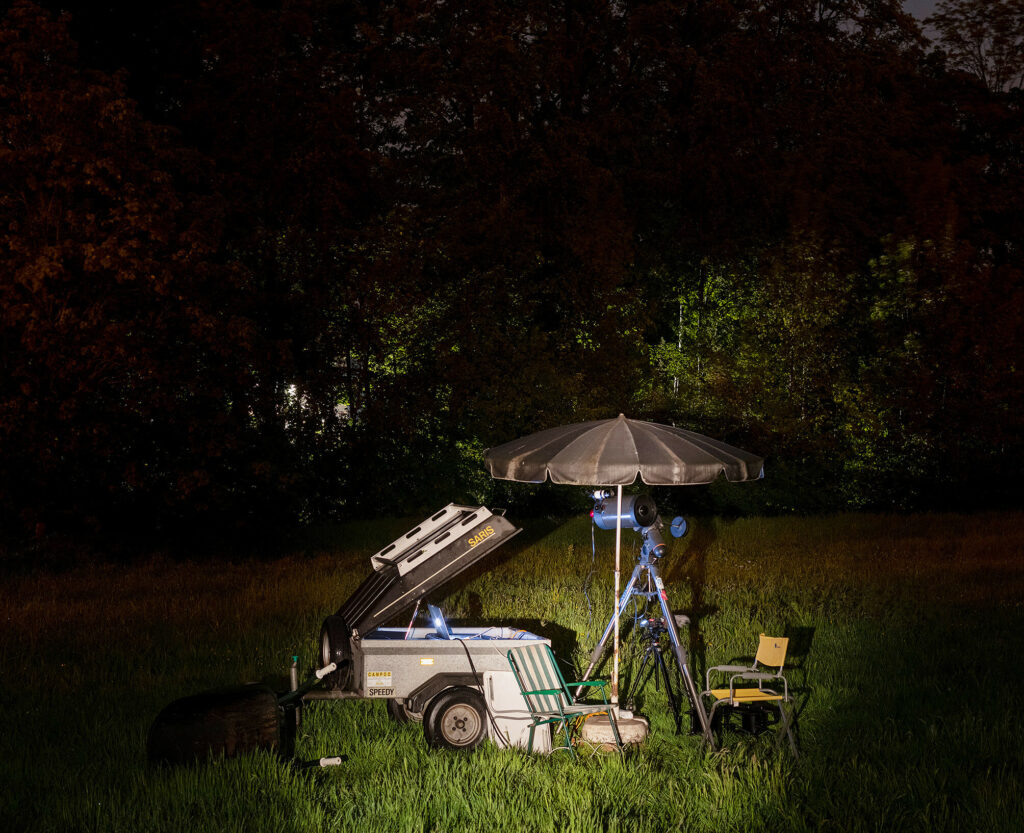
In another exposure of the same length, we left the flashlight on for approximately eight seconds and pointed the beam a bit lower.

I must have driven past this rocky landscape about sixteen times, going back and forth between viewpoints and the house the parents of a friend let me stay in. On the last day, I left early for the airport, pulled into a lay-by, took my tripod and camera out of the trunk of the red Volkswagen Polo rental car and made two photographs.1 It was only when I got home, had the film developed, scanned it and was removing dust particles from the file, that I discovered the hand painted text on the rock: ‘PROIBIDO BUSCAR SETAS’.
